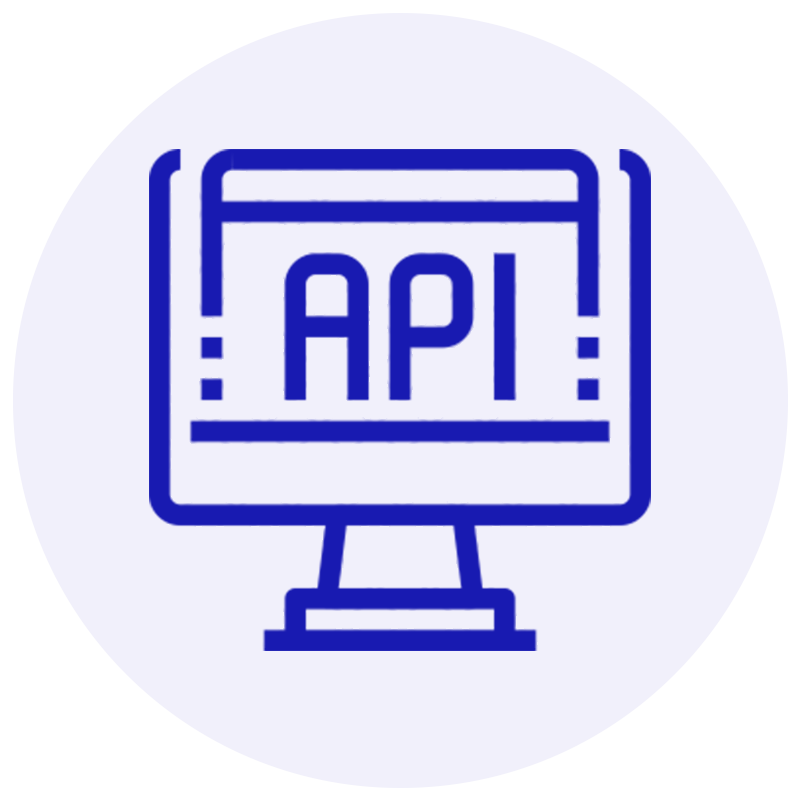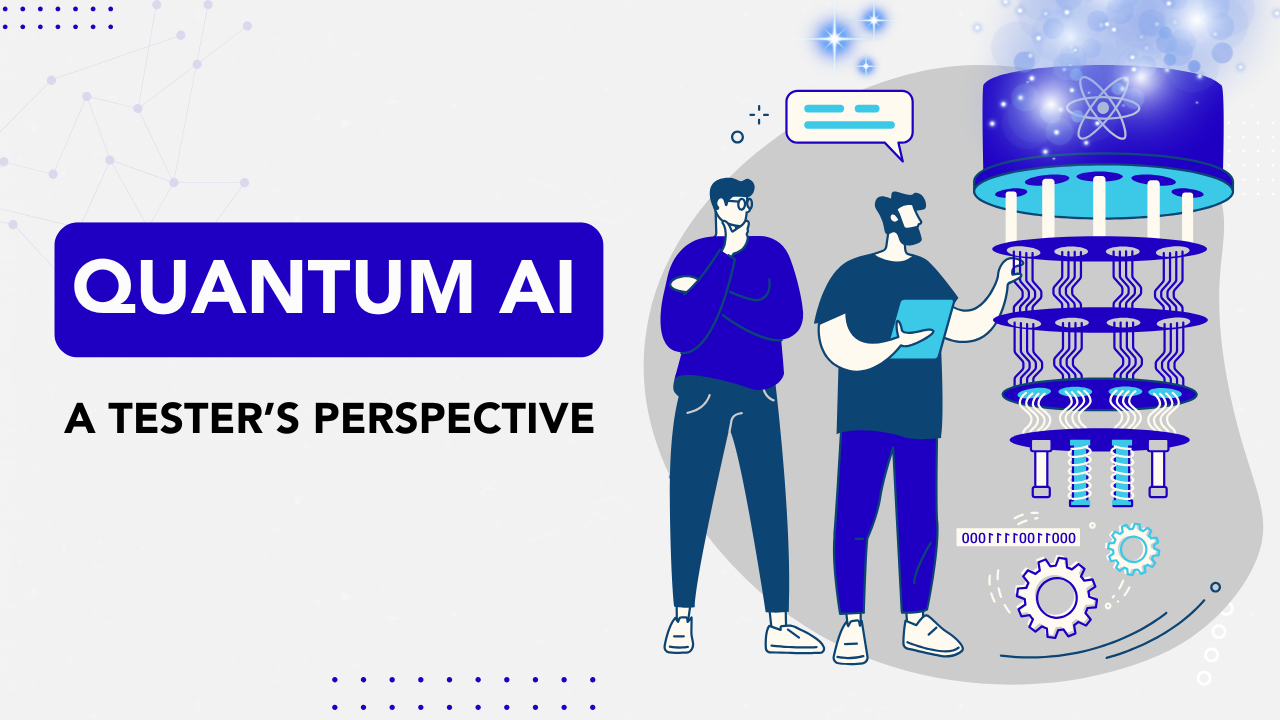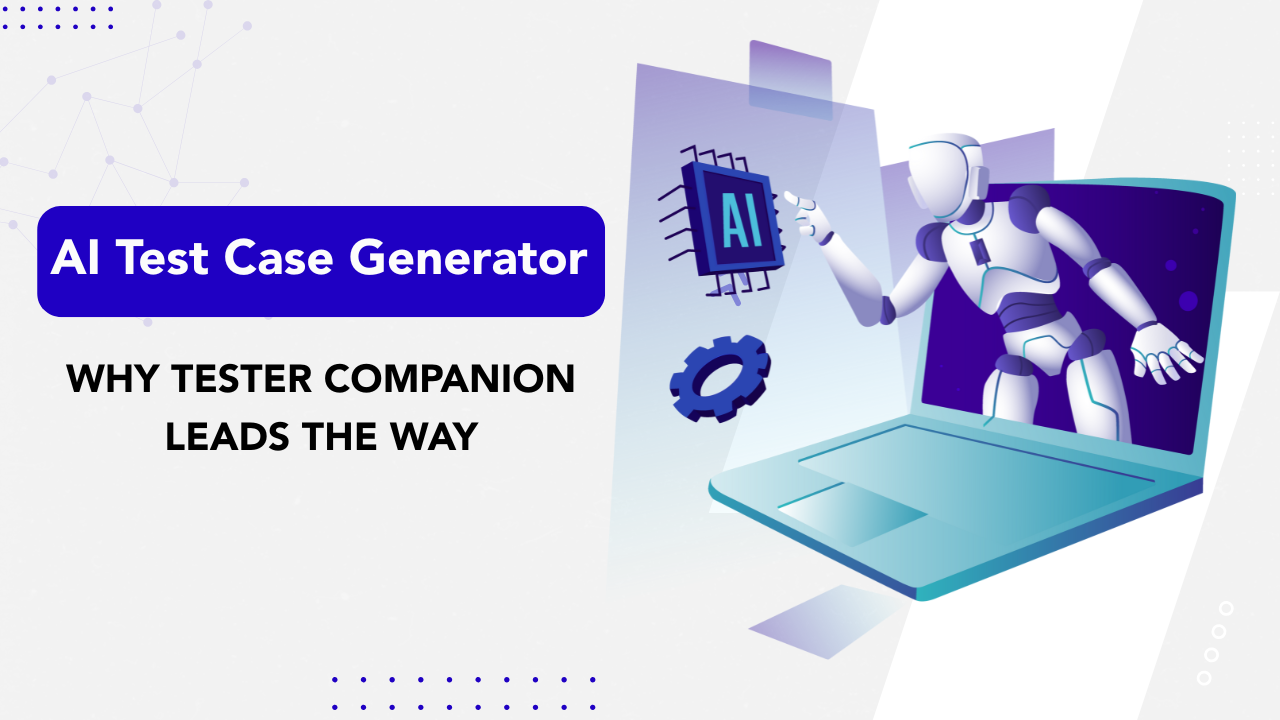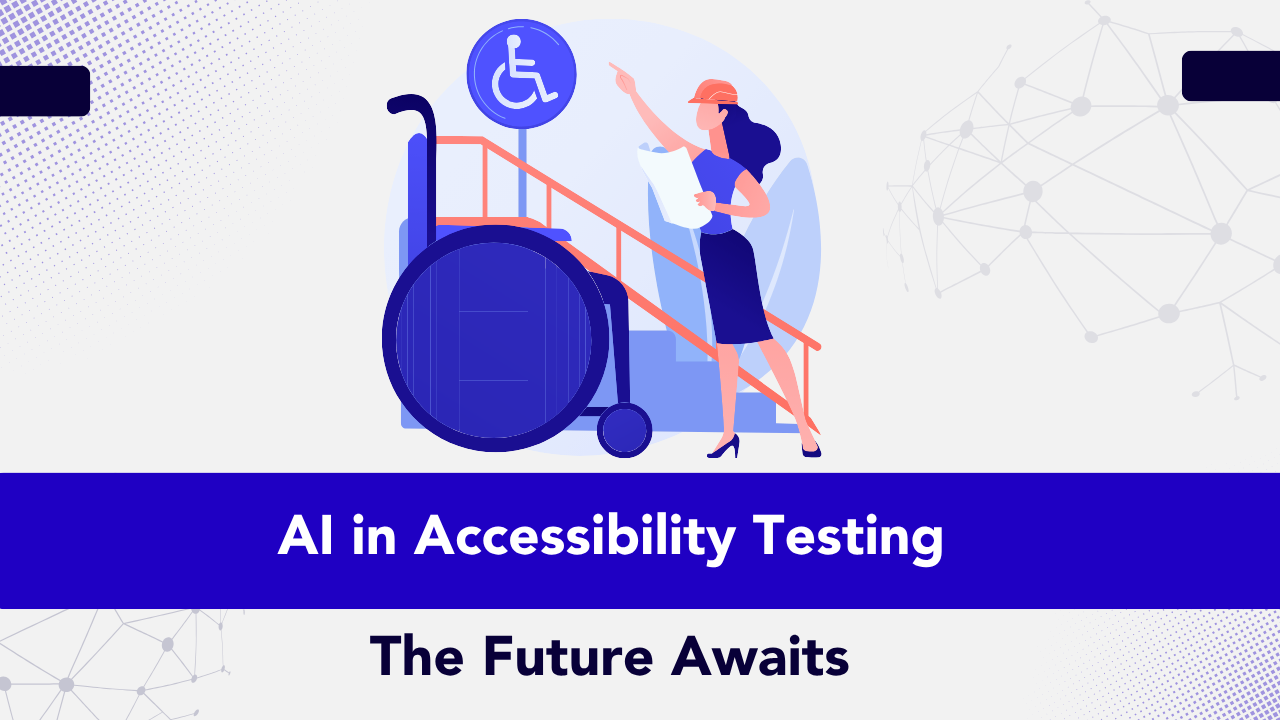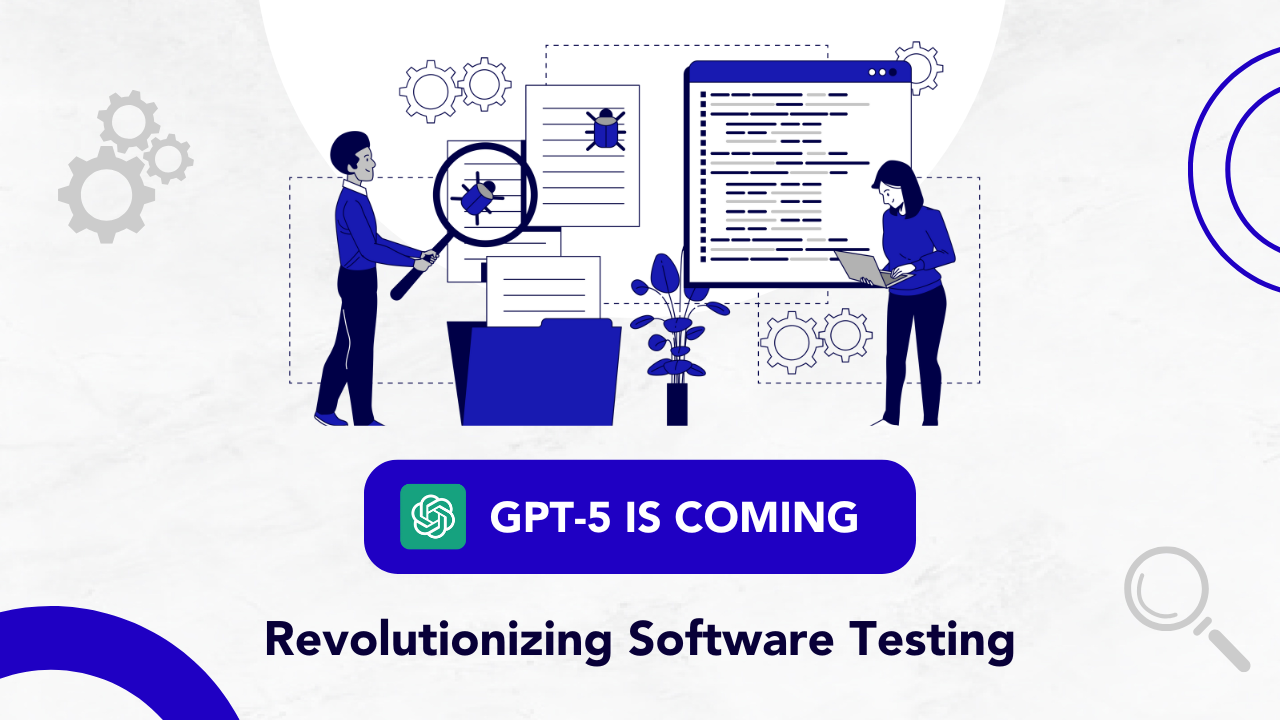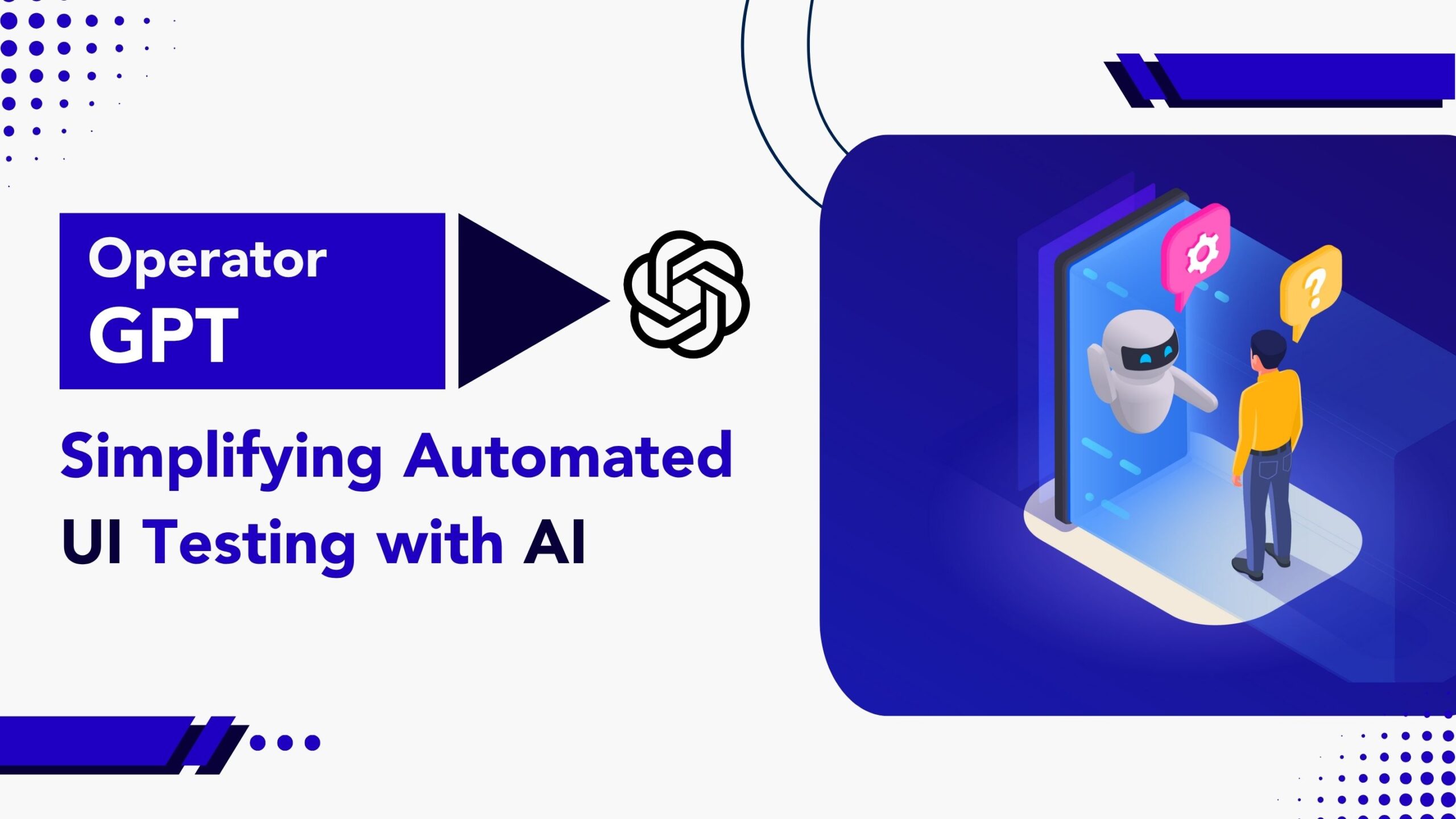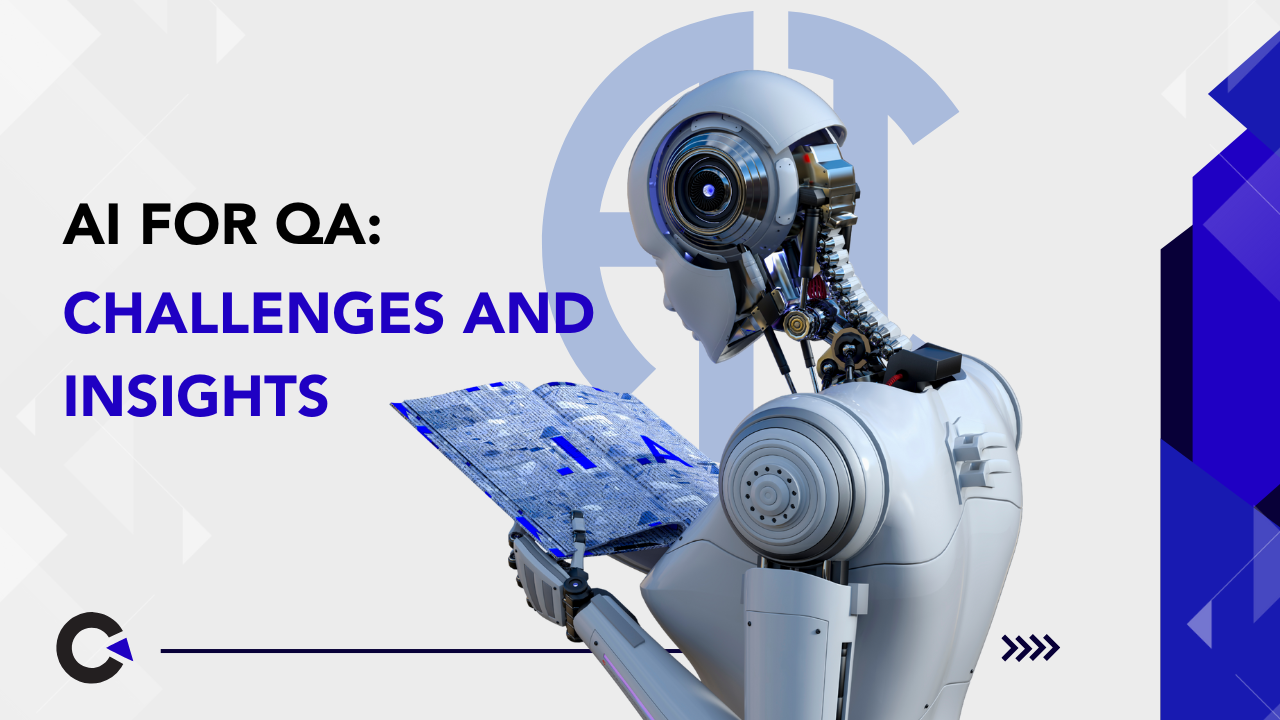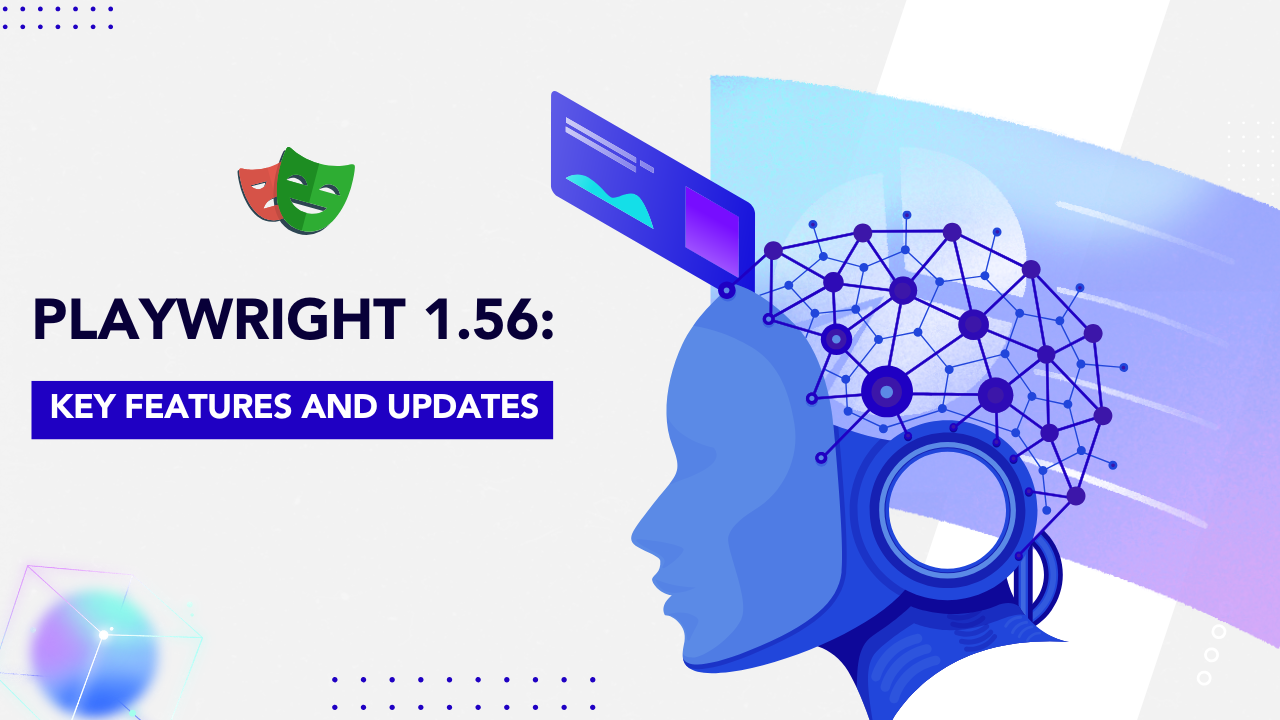
by Jacob | Nov 11, 2024 | Artificial Intelligence, Blog, Latest Post |
The topic of artificial intelligence (AI) and the idea of AI has become very popular in recent years. Machines now behave like people and can sometimes think better than us, especially when it comes to driverless cars. This technology is no longer just in stories or movies. It is part of our daily lives, affects various industries, and provides a range of AI services that support everything from virtual assistants to predictive analytics. Benefits and Risks of AI are important to consider. As we move into this new time with AI, we need to understand the benefits and risks of AI, such as its capabilities, limitations, and how it might impact society.
Key Highlights
- Artificial intelligence (AI) is quickly changing how we live and work. It has many benefits, but we also need to think about some of the risks. Understanding the benefits and risks of AI is crucial as it continues to evolve.
- AI is great at handling routine tasks and managing large amounts of data, improving business efficiency. However, we must focus on the ethical implications and data privacy concerns that come with it. Additionally, we must consider the potential effects of AI on jobs. Balancing the benefits and risks of AI will be essential for its responsible use.
- As AI grows, understanding these benefits and risks will help individuals and organizations use it wisely. Finding a balance between what AI can do and its ethical implications will shape its future impact on society.
Understanding AI and Its Impact: The Benefits and Risks of AI
AI helps computers do boring tasks and tedious tasks that usually need simulation of human intelligence. It copies how people think, alleviating repetitive work. This way, human workers can focus on more complex jobs. AI examines vast amounts of data to understand it more clearly. It can solve problems, make choices, and notice patterns. A clear example is virtual assistants, which help us organize our daily schedules. However, some AI programs can be hard to understand, like those used for medical diagnoses. AI plays a key role in our work, learning, and how we interact with the world.
This strong technology gives us many chances in different areas. These areas include healthcare, finance, manufacturing, and protecting the environment. But the quick rise and use of AI also bring important ethical and social concerns. We must think about these concerns carefully and talk about them.
Defining Artificial Intelligence
Artificial intelligence, or AI, is when computers behave like people. This lets them learn new things and use this knowledge in different ways. They can even correct their mistakes. The main goal of AI is to build machines that can think, learn, and act like humans.
A big part of AI is natural language processing, or NLP. This tool helps computers read and understand what people say and write. NLP is very useful. You can find it in virtual assistants, text translation, and in understanding feelings from text.
While AI presents the benefits and risks of AI, it also brings many opportunities, from simplifying communication to changing how we share and process information.

The Evolution of AI Through the Years: The Benefits and Risks of AI in Progress
The growth of AI has happened fast in recent years. Machine learning is a part of AI. It helps AI systems learn from data on their own. They do not need people’s help. Because of this, AI systems can get better and grow over time.
Deep learning is a strong form of machine learning. It uses artificial neural networks with several layers. This design helps it manage large amounts of data well. Because of this, deep learning has advanced a lot in fields like image recognition, natural language processing, and speech synthesis.
As artificial intelligence develops, ai systems will get smarter. These smarter systems may make it hard to tell the difference between human intelligence and artificial intelligence.
The Benefits of AI
- Better Efficiency and Productivity – AI can do boring, repetitive tasks like entering data and checking orders. This lets workers focus on more interesting projects and helps companies speed up. New tools can also handle complex tasks automatically, helping businesses stay ahead.
- Smart Data Insights – AI can read large amounts of data fast. It finds patterns and gives insights that help companies make better choices. New models like OpenAI’s GPT-4 and Google’s Gemini are great at data analysis. In hospitals, AI helps doctors find illnesses early, which speeds up and improves treatment.
- 24/7 Customer Support – AI-powered virtual assistants and chatbots are available at all times. This means people can get help whenever they need it. New chatbots are friendlier and better at answering questions. They provide a quicker and easier experience for customers without always needing a human.
- Personalized Recommendations – AI can make experiences feel special by suggesting products or creating music playlists. Companies like Netflix and Amazon use AI to provide personalized suggestions, making the user experience better. AI can also change these recommendations in real-time to keep them current.
- High Accuracy in Specialized Fields – In critical areas like finance and healthcare, AI’s accuracy is very important. For example, AI tools in medicine assist doctors in quickly and accurately finding diseases, which enhances care. A tool like AlphaFold from Google’s DeepMind can even predict protein shapes, marking a big step in drug discovery.
Despite these advantages, it’s vital to always keep in mind the benefits and risks of AI to avoid over-dependence or unintended consequences.
The Downsides of AI
- Job Changes and Job Loss – AI is expected to automate many routine jobs, leading to job displacement in industries like manufacturing and customer service. However, the benefits and risks of AI also include the creation of new jobs in fields like data analysis and cybersecurity.
- Privacy and Security Concerns – AI often uses personal data, so privacy and security can be a worry. New tools, like facial recognition, come with risks if the data is not safe. Cyberattacks and data leaks are real threats because hackers try to break into AI systems. Countries are creating new rules to protect privacy. Still, keeping AI safe for everyone is a big challenge.
- Bias and Fairness Issues – AI can be unfair since it learns from data that might have hidden biases. If the data is biased, AI might make unfair choices in hiring or for loans. Companies are working to make AI fairer, but we still have a long way to go to build trust in AI systems.
- High Costs and Environmental Impact -AI models require significant computing power, which can be expensive and environmentally taxing. Reducing the environmental footprint of AI will be part of balancing the benefits and risks of AI.
- Over-Reliance on AI and Loss of Skills – If we depend too much on AI, we might forget basic skills. For example, GPS helps us find places, but it can weaken our sense of direction. In healthcare, doctors who rely heavily on AI for diagnoses might lose practice with hands-on skills. It’s important to keep our human skills strong as AI becomes more useful.
AI Regulations and the Way Forward
As AI continues to evolve, establishing guidelines to ensure its ethical use is critical. Several countries are already working on regulations to address the benefits and risks of AI, ensuring it’s used responsibly.
- The EU’s AI Act: This law sorts AI programs by their risk level. It also sets rules to protect privacy and make sure things are fair.
- The US National AI Initiative: This plan wants to give money for AI research and create fair rules.
- China’s AI Regulations: China has its own rules to make sure that AI is helpful in important areas like healthcare and finance.
Conclusion
In conclusion, AI presents immense benefits, from streamlining work to revolutionizing healthcare. However, the benefits and risks of AI must be carefully considered to mitigate potential negative impacts. As AI continues to develop, finding a balance between its growth and its ethical implications will shape its future and its role in society. It’s essential to stay aware of these factors to use AI responsibly and effectively.
Frequently Asked Questions
-
What are 5 disadvantages of AI?
Job Loss: AI can replace many human jobs, leading to unemployment.
Privacy Issues: AI uses a lot of personal data, which can lead to privacy concerns if not handled well.
Bias: AI can make unfair decisions if it’s trained on biased data.
Dependence on AI: Relying too much on AI can make people lose control over important decisions.
High Costs: Developing and maintaining AI systems can be very expensive.
-
What are the benefits of artificial intelligence?
Automation of Tasks: AI can automate repetitive and time-consuming tasks, saving time and reducing human error. This is particularly useful in industries like manufacturing, customer service, and data entry.
Enhanced Decision-Making: AI can analyze large amounts of data quickly to help businesses and individuals make informed decisions. For example, in healthcare, AI can assist doctors by providing insights for better diagnosis and treatment plans.
Increased Efficiency and Productivity: AI can work continuously without fatigue, boosting productivity. In logistics, AI helps optimize delivery routes, saving time and fuel.
Personalization: AI can provide personalized experiences, such as recommendations on streaming platforms or shopping websites, which improves user satisfaction.
Improved Safety: AI-powered systems like driverless cars and smart surveillance can enhance safety by reducing human error and responding quickly to hazards.
-
Is AI good or bad for the future?
AI could greatly benefit the future by improving healthcare, boosting productivity, and supporting environmental sustainability. However, it poses risks like job loss, privacy concerns, and biased decision-making. Whether AI proves good or bad depends on ethical use, fair regulation, and balancing technological advancement with human values and control.
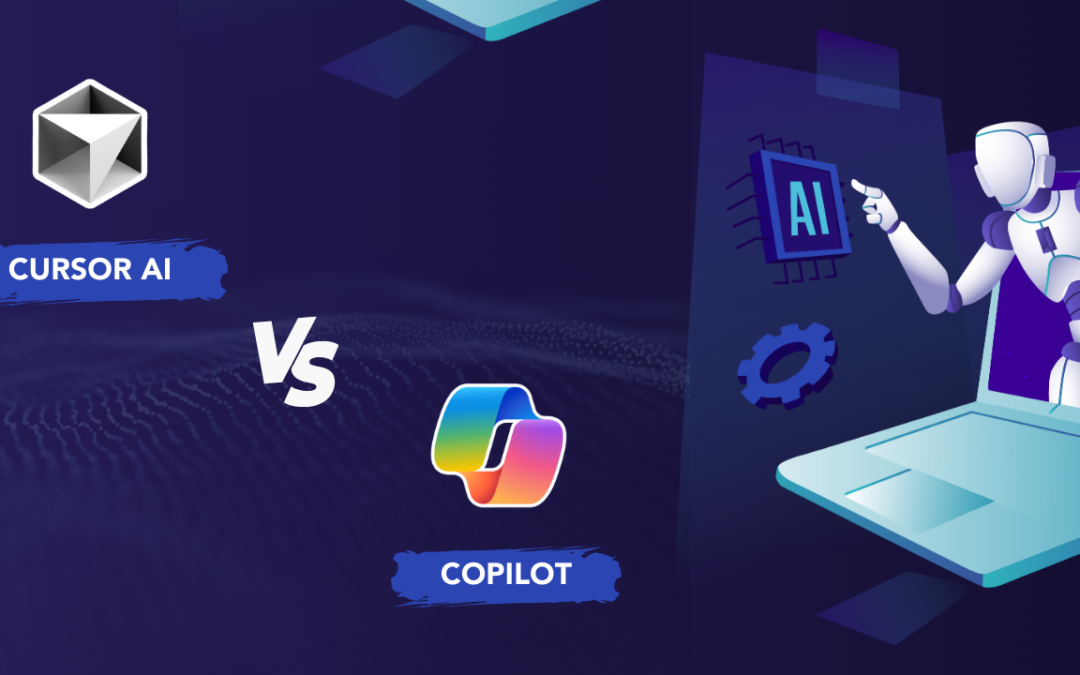
by Chris Adams | Nov 6, 2024 | Artificial Intelligence, Blog, Recent, Latest Post |
AI coding assistants like Cursor AI and GitHub Copilot are changing the way we create software. These powerful tools help developers write better code by providing advanced code completion and intelligent suggestions. In this comparison, we’ll take a closer look at what each tool offers, along with their strengths and weaknesses. By understanding the differences between Cursor AI vs. Copilot, this guide will help developers choose the best option for their specific needs
Key Highlights
- Cursor AI and GitHub Copilot are top AI tools that make software development easier.
- This review looks at their unique features, strengths, and weaknesses. It helps developers choose wisely.
- Cursor AI is good at understanding entire projects. It can be customized to match your coding style and workflow.
- GitHub Copilot is great for working with multiple programming languages. It benefits from using GitHub’s large codebase.
- Both tools have free and paid options. They work well for individual developers and team businesses.
- Choosing the right tool depends on your specific needs, development setup, and budget.
A Closer Look at Cursor AI and GitHub Copilot
In the changing world of AI coding tools, Cursor AI and GitHub Copilot are important. Both of these tools make coding faster and simpler. They give smart code suggestions and automate simple tasks. This helps developers spend more time on harder problems.
They use different ways and special features. These features match the needs and styles of different developers. Let’s look closely at each tool. We will see what they can do. We will also see how they compare in several areas.
Overview of Cursor AI Features and Capabilities
Cursor AI is unique because it looks at the whole codebase. It also adjusts to the way each developer works. It does more than just basic code completion. Instead, it gives helpful suggestions based on the project structure and coding styles. This tool keeps improving to better support developers.
One wonderful thing about Cursor AI is the special AI pane, designed with simplicity in mind. This pane lets users chat with the AI assistant right in the code editor. Developers can ask questions about their code. They can also get help with specific tasks. Plus, they can make entire code blocks just by describing them in natural language.
Cursor AI can work with many languages. It supports popular ones like JavaScript, Python, Java, and C#. While it does not cover as many less-common languages as GitHub Copilot, it is very knowledgeable about the languages it does support. This allows it to give better and more precise suggestions for your coding projects.
Overview of GitHub Copilot Features and Capabilities
GitHub Copilot is special because it teams up with GitHub and supports many programming languages. OpenAI helped to create it. Copilot uses a large amount of code on GitHub to give helpful code suggestions right in the developer’s workflow.
Users of Visual Studio Code on macOS enjoy how easy it is to code. This tool fits well with their setup. It gives code suggestions in real-time. It can also auto-complete text. Additionally, it can build entire functions based on what the developer is doing. This makes coding easier and helps developers stay focused without switching tools.
GitHub Copilot is not just for Visual Studio Code. It also works well with other development tools, like Visual Studio, JetBrains IDEs, and Neovim. The aim is to help developers on different platforms while using GitHub’s useful information.
Key Differences Between Cursor AI and GitHub Copilot
Cursor AI and GitHub Copilot both help make coding easier with AI, but they do so in different ways. Cursor AI looks at each project one at a time. It learns how the developer codes and gets better at helping as time goes on. GitHub Copilot, backed by Microsoft, is tied closely to GitHub. It gives many code suggestions from a large set of open-source code.
These differences help us see what each tool is good at and when to use them. Developers need to know this information. It helps them pick the right tool for their workflow, coding style, and project needs.
Approach to Code Completion
Cursor AI and GitHub Copilot assist with completing code, but they work differently. Each has its advantages. Cursor AI focuses on giving accurate help for a specific project. It looks at the whole codebase and learns the developer’s style along with the project’s rules. This helps it suggest better code, making it a better choice for developers looking for tailored assistance.
GitHub Copilot has a broad view. It uses a large database of code from different programming languages. This helps it to provide many suggestions. You can find it useful for checking out new libraries or functions that you are not familiar with. However, sometimes its guidance may not be very detailed or suitable for your situation.
Here’s a summary of their methods:
Cursor AI:
- Aims to be accurate and relevant in the project.
- Knows coding styles and project rules.
- Good at understanding and suggesting code for the project.
GitHub Copilot:
- Gives more code suggestions.
- Uses data from GitHub’s large code library.
- Helps you explore new libraries and functions.
Integration with Development Environments
A developer’s connection with their favorite tools is key for easy use. Cursor AI and GitHub Copilot have made efforts to blend into popular development environments. But they go about it in different ways.
Cursor AI aims to create an easy and connected experience. To do this, they chose to build their own IDE, which is a fork of Visual Studio Code. This decision allows them to have better control and to customize AI features right within the development environment. This way, it makes the workflow feel smooth.
GitHub Copilot works with different IDEs using a plugin method. It easily connects with tools like Visual Studio, Visual Studio Code, Neovim, and several JetBrains IDEs. This variety makes it usable for many developers with different IDEs. However, the way it connects might be different for each tool.
| Feature |
Cursor AI |
GitHub Copilot |
| Primary IDE |
Dedicated IDE (fork of VS Code) |
Plugin-based (VS Code, Visual Studio, others) |
| Integration Approach |
Deep, native integration |
Plugin-based, varying levels of integration |
The Strengths of Cursor AI
Cursor AI is a strong tool for developers. It works as a flexible AI coding assistant. It can adapt to each developer’s coding style and project rules. This helps in giving better and more useful code suggestions.
Cursor AI does more than just finish code. It gets the entire project. This helps in organizing code, fixing errors, and creating large parts of code from simple descriptions in natural language. It is really useful for developers who work on difficult projects. They need a strong grasp of the code and smooth workflows.
Unique Selling Points of Cursor AI
Cursor AI stands out from other options because it offers unique features. These features are made to help meet the specific needs of developers.
Cursor AI is special because it can see and understand the whole codebase, not just a single file. This deep understanding helps it offer better suggestions. It can also handle changes that involve multiple files and modules.
Adaptive Learning: Unlike other AI tools that just offer general advice, Cursor AI learns your coding style. It understands the rules of your project. As a result, it provides you with accurate and personalized help that matches your specific needs.
Cursor AI helps you get things done easily. It uses its own IDE, which is similar to Visual Studio Code. This setup ensures that features like code completion, code generation, and debugging work well together. This way, you can be more productive and have fewer interruptions.
Use Cases Where Cursor AI Excels
Cursor AI is a useful AI coding assistant in several ways:
- Large-Scale Projects: When dealing with large code and complex projects, Cursor AI can read and understand the whole codebase. Its suggestions are often accurate and useful. This reduces mistakes and saves time when fixing issues.
- Team Environments: In team coding settings where everyone must keep a similar style, Cursor AI works great. It learns how the team functions and helps maintain code consistency. This makes the code clearer and easier to read.
- Refactoring and Code Modernization: Cursor AI has a strong grasp of code. It is good for enhancing and updating old code. It can recommend better writing practices, assist in moving to new frameworks, and take care of boring tasks. This lets developers focus on important design choices.
The Advantages of GitHub Copilot
GitHub Copilot is special. It works as an AI helper for people who code. It gives smart code suggestions, which speeds up the coding process. Its main power comes from the huge amount of code on GitHub. This helps it support many programming languages and different coding styles.
GitHub Copilot is unique because it gives developers access to a lot of knowledge across various IDEs. This is great for those who want to try new programming languages, libraries, or frameworks. It provides many code examples and ways to use them, which is very helpful. Since it can make code snippets quickly and suggest different methods, it helps users learn and explore new ideas faster.
GitHub Copilot’s Standout Features
GitHub Copilot offers many important features. These make it a valuable tool for AI coding help.
- Wide Language Support: GitHub Copilot accesses a large code library from GitHub. It helps with many programming languages. This includes popular ones and some that are less known. This makes it a useful tool for developers working with different technology.
- Easy Integration with GitHub: As part of the GitHub platform, Copilot works smoothly with GitHub repositories. It offers suggestions that match the context. It examines project files and follows best practices from those files, which makes coding simpler.
- Turning Natural Language Into Code: A cool feature of Copilot is that it can turn plain language into code. Developers can explain what they want to do, and Copilot can suggest or generate code that matches their ideas. This helps connect what people mean with real coding.
Scenarios Where GitHub Copilot Shines
GitHub Copilot works really well where it can use its language support. It can write code and link to GitHub with ease.
Rapid Prototyping and Experimentation: When trying out new ideas or making quick models, GH Copilot can turn natural language descriptions into code. This helps developers work faster and test different methods easily.
Learning New Technologies: If you are a developer who uses new languages or frameworks, GitHub Copilot is very helpful. It has a lot of knowledge. It can suggest code examples. These examples help users to understand syntax and learn about libraries. This helps make learning faster.
Copilot may not check codebases as thoroughly as Cursor AI. Still, it helps improve code quality. It gives helpful code snippets and encourages good practices. This way, developers can write cleaner code and have fewer errors.
Pricing
Both Cursor AI and GitHub Copilot provide various pricing plans for users. GitHub Copilot uses a simple subscription model. You can use its features by paying a monthly or yearly fee. There is no free option, but the cost is fair. It provides good value for developers looking to improve their workflow with AI.
Cursor AI offers different pricing plans. There is a free plan, but it has some limited features. For more advanced options, you can choose from the professional and business plans. This allows individual developers to try Cursor AI for free. Teams can also choose flexible options to meet larger needs.
Pros and Cons
Both tools are good for developers. Each one has its own strengths and weaknesses. It is important to understand these differences. This will help you make a wise choice based on your needs and preferences for the project.
Let’s look at the good and bad points of every AI coding assistant. This will help us see what they are good at and where they may fall short. It will also help developers choose the AI tool that fits their specific needs.
Cursor Pros:
- Understanding Your Codebase: Cursor AI is special because it can read and understand your entire codebase. This allows it to give smarter suggestions. It does more than just finish your code; it checks the details of how your project is laid out.
- Personalized Suggestions: While you code, Cursor AI pays attention to how you write. It adjusts its suggestions to fit your style better. As time goes on, you will get help that feels more personal, since it learns what you like and adapts to your coding method.
- Enhanced IDE Experience: Cursor AI has its own unique IDE, based on Visual Studio Code. This gives you a smooth and complete experience. It’s easy to access great features, like code completion and changing your whole project, in a space you already know. This helps cut down on distractions and makes your work better.
Cursor Cons:
- Limited IDE Integration (Only Its Own): Cursor AI works well in its own build. However, it does not connect easily with other popular IDEs. Developers who like using different IDEs may have a few problems. They might not enjoy the same smooth experience and could face issues with compatibility.
- Possible Learning Curve for New Users: Moving to a new IDE, even if it seems a bit like Visual Studio Code, can be tough. Developers used to other IDEs might need time to get used to the Cursor AI workflow and learn how to use its features well.
- Reliance on Cursor AI’s IDE: While Cursor AI’s own IDE gives an easy experience, it also means developers need to depend on it. Those who know other IDEs or have special project needs may see this as a problem.
GitHub Copilot Pros:
- Language Support: GitHub Copilot supports many programming languages. It pulls from a large set of code on GitHub. It offers more help than many other tools.
- Easy Plugin Integration: GitHub Copilot works great with popular platforms like Visual Studio Code. It has a simple plugin that is easy to use. This helps developers keep their normal workflow while using Copilot.
- Turning Natural Language Into Code: A great feature of Copilot is its skill in turning natural language into code. Developers can describe what they want easily. They can share their ideas, and Copilot will give them code suggestions that fit their needs.
GitHub Copilot Cons:
GitHub Copilot has a large codebase. Sometimes, its suggestions can be too broad. It may provide code snippets that are correct, but they do not always fit your project. This means developers might have to check and change the code it suggests.
Copilot works with GitHub and can look at project folders. However, it doesn’t fully understand the coding styles in your project. This can lead to suggestions that don’t match your team’s standards. Because of this, you may need to put more effort into keeping everything consistent.
There is a risk of depending too much on Copilot. This can result in not fully understanding the code. Although Copilot can be helpful, if you only follow its suggestions without learning the key concepts, it will leave gaps in your knowledge. These gaps can make it harder to tackle difficult problems later on.
Conclusion
In conclusion, by examining Cursor AI and GitHub Copilot, we gain valuable insights into their features and how developers can use them effectively. Each tool has its own strengths—Cursor AI performs well for certain tasks, while GitHub Copilot excels in other areas. Understanding the main differences between these tools allows developers to select the one that best suits their needs and preferences, whether they prioritize code completion quality, integration with their development environment, or unique features.
For developers looking to go beyond standard tools, Codoid provides best-in-class AI services to further enhance the coding and development experience. Exploring these advanced AI solutions, including Codoid’s offerings, can take your coding capabilities to the next level and significantly boost productivity.
Frequently Asked Questions
-
Which tool is more user-friendly for beginners?
For beginners, GitHub Copilot is simple to use. It works well with popular tools like Visual Studio Code. This makes it feel familiar and helps you learn better. Cursor AI is strong, but you have to get used to its own IDE. This can be tough for new developers.
-
Can either tool be integrated with any IDE?
GitHub Copilot can work with several IDEs because of its plugin. It supports many platforms and is not just for Visual Studio Code. In contrast, Cursor AI mainly works in its own IDE, which is built on VS Code. It may have some limits when trying to connect with other IDEs.
-
How do the pricing models of Cursor AI and GitHub Copilot compare?
Cursor AI has a free plan, but it has limited features. On the other hand, GitHub Copilot needs payment for its subscription. Both services offer paid plans that have better features for software development. Still, Cursor AI has more flexible choices in its plans.
-
Which tool offers better support for collaborative projects?
Cursor AI helps teams work together on projects. It understands code very well. It can adjust to the coding styles your team uses. This helps to keep things consistent. It also makes it easier to collaborate in a development environment.
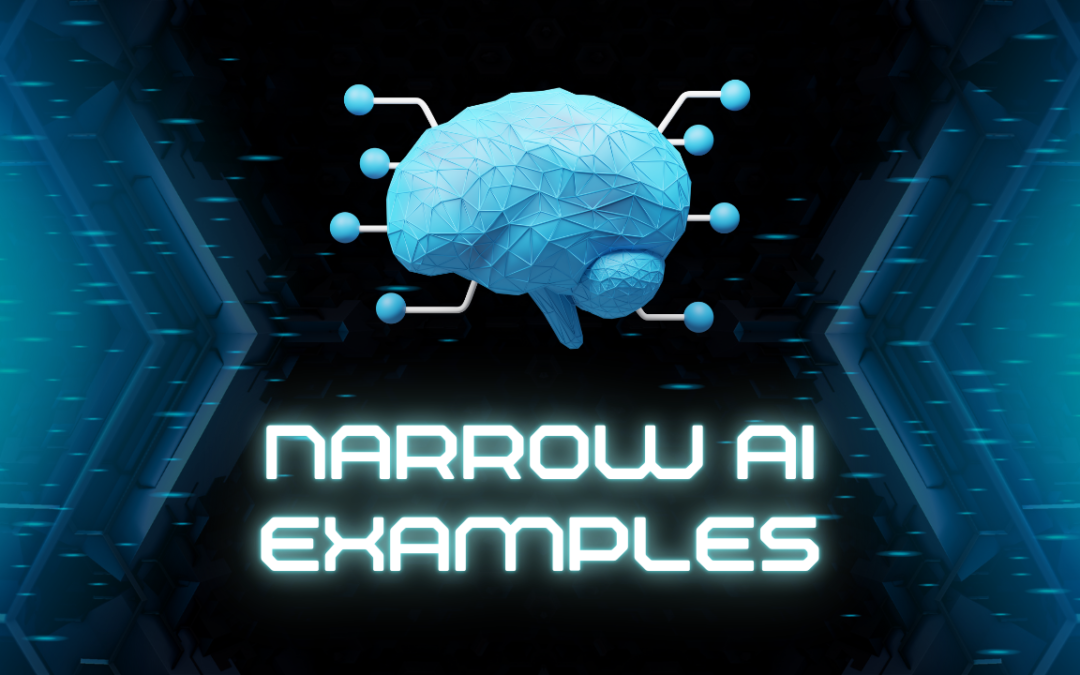
by Hannah Rivera | Oct 29, 2024 | Artificial Intelligence, Blog, Latest Post |
Artificial Intelligence (AI) plays a big role in our daily lives, often without us noticing. From the alarm clock that wakes us up to the music we enjoy at night, AI is always working. The term “AI” might seem tricky, but most of it is Narrow AI or Weak AI. This type is different from Gen AI, also known as Strong AI, which aims to mimic human intelligence. Narrow AI is great at specific tasks, like voice recognition and image analysis. Knowing the different types of AI is important. It helps us understand how technology affects our lives. Whether it’s a voice assistant that listens to us or a system that suggests movies, Narrow AI makes technology easy and useful for everyone.
In this blog, we will talk about narrow AI. We will look at how people use it in different industries. We will also discover why it is important in our technology-focused world today. By the end, you will know the benefits and downsides of narrow AI. You will also see how it can affect our lives.
What is Narrow AI?
Narrow AI, called Weak AI, is designed to do one specific task very well. It is a type of artificial intelligence system. Narrow AI works on tasks that are related to each other. This is different from artificial general intelligence. General intelligence tries to mimic human intelligence and thinking in a more flexible way. For instance, a Narrow AI system might be great at recognizing faces in pictures. However, it cannot talk or understand human language like we can.
A Simple Example
Think about an AI that can play chess. It looks at the chess board and thinks about possible moves. Then it picks the best move using training data. But this AI doesn’t read news articles or recognize friends in pictures. It is only made for playing chess and for no other purpose.
Narrow AI systems are made for specific tasks. A good example is self-driving cars. These systems usually do better than people in jobs like image recognition and data analysis. This is especially true in data science. They learn from large amounts of data. They use machine learning and deep learning to get better at their tasks. This means they can improve without needing new programming every time.
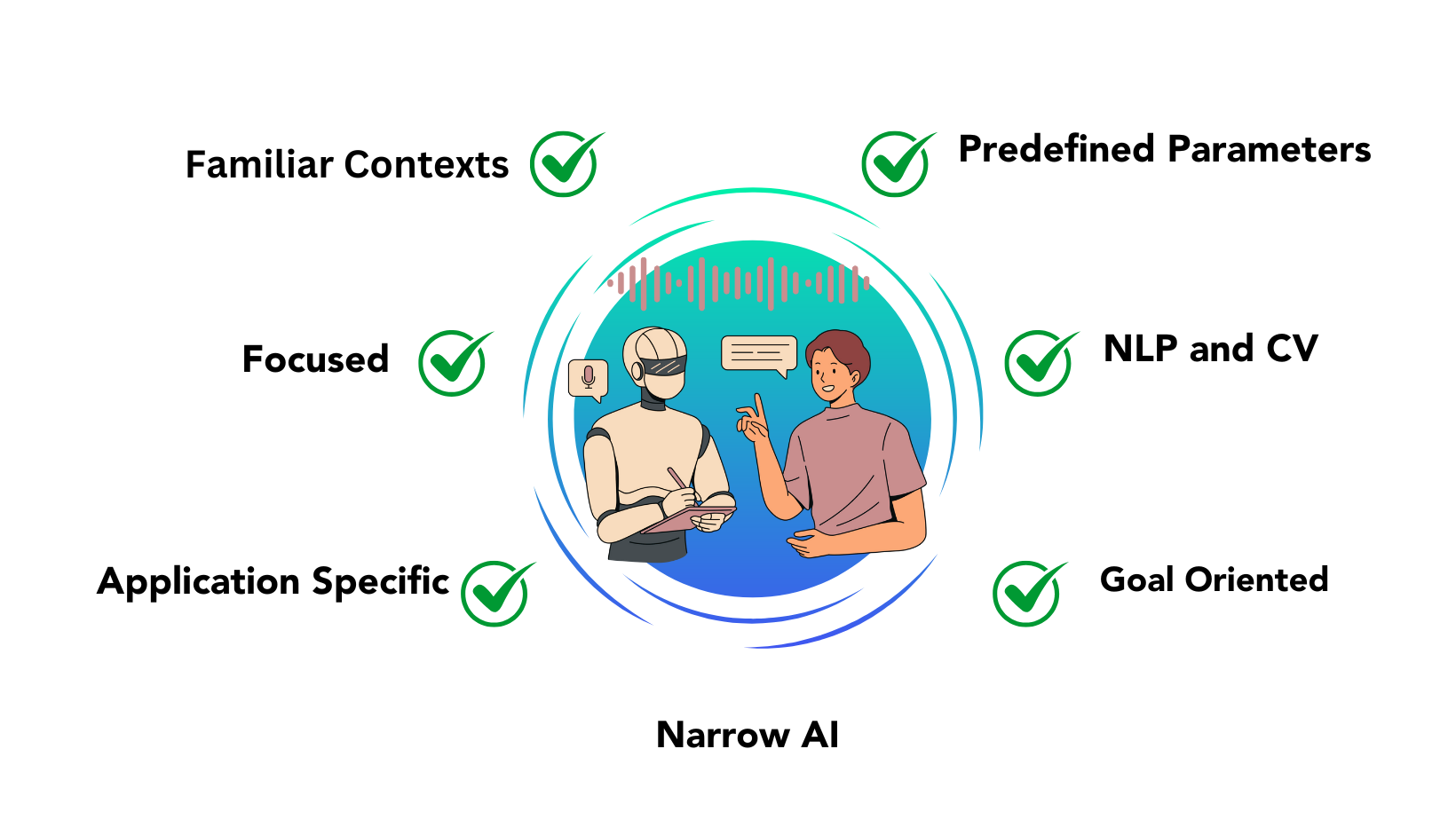
How Does Narrow AI Work?
Narrow AI uses specific rules and algorithms to find patterns in data. It can take information from sensors and old data to make quick choices or guesses. A good example of this is speech recognition AI. This type of AI works like search engines that search through a lot of data. It trains by listening to many hours of speech. It learns to link sounds to words. As it gets more data, it improves in understanding words, accents, and complex commands. This helps it better understand human speech.
Narrow AI has fewer problem-solving skills than General AI. However, this limited ability is what makes Narrow AI helpful for daily tasks.
How is Narrow AI Different from General AI?
Understanding narrow AI and general AI is important. It helps us see how AI impacts our world today.
- Specific vs. Broad Tasks: Narrow AI is great at one job, like translating languages or recognizing objects. But it has some limits. General AI, in contrast, tries to do several jobs just like people do. It can learn new tasks by itself without needing extra training.
- Learning and Flexibility: General AI can learn and change to solve new problems, just like a human. Narrow AI, on the other hand, needs special training for every new task. For instance, if an AI is used to filter spam emails, it cannot translate languages unless it is programmed and trained again.
- Real-World Applications: Right now, most AI systems we use are Narrow AI. We have a long way to go before we can achieve true General AI since it is more of a goal than a reality in AI research.
Everyday Examples of Narrow AI
Narrow AI is a part of our everyday life. It works quietly behind the scenes, so we often do not see it. Here are some ways it affects us:
1. Smart Assistants (e.g., Siri, Alexa)
When you tell Siri or Google Assistant to “play some relaxing music” or to set an alarm for tomorrow, you are using narrow AI. This type of AI is called Natural Language Processing, or NLP. NLP helps virtual assistants understand your words and respond to your voice commands. This makes them useful for daily tasks. They can check the weather, read the news, or even control your smart home devices.
Machine learning helps these assistants know what you like as time passes. For example, if you often ask for specific kinds of music, they will suggest similar artists or music styles. This makes your experience feel more special and personal just for you.
2. Recommendation Engines (e.g., Netflix, YouTube, Amazon)
Have you noticed how Netflix recommends shows? This happens because of a narrow AI system. It looks at what you have watched in the past. It also checks what other viewers enjoy. By finding trends in this information, the recommendation engine can suggest movies or shows you might like. This makes your streaming experience even better.
Recommendation engines are useful for more than just fun. Online shopping sites, like Amazon, use narrow AI to recommend products. They look at what you have bought before and what you have searched online. This makes shopping easier for you and boosts their sales.
3. Spam Filters (e.g., Gmail)
Email services like Gmail use narrow AI to filter out spam. This AI looks at incoming emails to find certain keywords, links, and patterns that show spam. It moves these emails to a separate folder, making your inbox neat. As time goes by, these spam filters get better. They learn from previous decisions and improve at spotting unwanted or harmful content.
Applications of Narrow AI in Different Industries
Narrow AI is improving many areas, not just our gadgets. It makes businesses work better. It helps them make smarter decisions and lowers the risk of human mistakes.
1. Healthcare
In hospitals, narrow AI helps doctors find diseases. It examines a lot of medical data. For example, AI that analyzes X-rays and MRI scans is very good at finding early signs of problems, such as tumors or fractures. It does this accurately. This speeds up diagnosis and lets doctors spend more time taking care of patients. Also, tools like Google Translate can improve communication in hospitals that have many languages.
AI-powered robots help in surgery. They can move in ways that are hard for humans. Special AI systems run these robots. They support doctors during difficult surgeries. This makes surgeries safer. It can also help people heal faster.
2. Finance
Narrow AI is very important for finding fraud in finance. When a customer makes a transaction, AI checks several details. It looks at the customer’s location, how much money they are using, and their past spending. If anything looks unusual, it can either flag the transaction for review or stop it altogether. This helps banks and finance companies cut down on fraud and protect their customers.
In trading, AI models look at market data to find trends and make fast decisions. These systems can react quicker than people. This speed helps traders take advantage of market changes better.
3. Manufacturing
In factories, narrow AI robots are changing work as we know it. These robots assemble parts, weld them, and inspect the finished products. They can complete these tasks faster and with greater accuracy than people. For example, when building cars, narrow AI robots make sure every part fits perfectly. This lowers mistakes and allows workers to get more done.
Narrow AI is useful for more than just assembly tasks. It can also detect when machines need repairs. By looking at sensor data, AI can find out when a machine could fail. This helps companies fix problems before they become costly. Keeping machines running smoothly saves both time and money.
Advantages of Using Narrow AI
Narrow AI is good at managing tasks that happen over and over. It handles large amounts of data very well. This skill supports many areas in several ways:
- Efficiency and Productivity: AI can work all day without getting tired. This helps businesses automate tasks that usually need a lot of human help. – Example: In customer service, AI chatbots can answer common questions all day. This lets human agents focus on complex problems.
- Data-Driven Decision-Making: Narrow AI is good at finding patterns in data. This helps businesses make better decisions. – Example: In marketing, AI systems look at customer data to create targeted campaigns. This boosts customer engagement and increases sales.
- Cost Savings: By automating daily tasks, Narrow AI helps save money on labor costs. It also reduces human mistakes. – Example: Automated quality checks in manufacturing catch defects early. This can help avoid costly product recalls.
- Personalized Experiences: Narrow AI can customize services and content based on what people like. This leads to happier customers. – Example: Online shopping sites suggest products that fit your preferences. This makes it easier for you to find things you may like.
Future of Narrow AI
As Narrow AI technology improves, it will play a bigger role in our daily lives. Here are some trends we might notice in the future:
- Better Smart Assistants: Voice assistants, like Siri and Alexa, are becoming smarter. They can now understand how people usually speak. They will learn what you like and dislike. This will help them manage tougher conversations and tasks. It will feel like chatting with a friend.
- Improved Device Connection: Narrow AI will help your devices work better together. Your smartphone, car, and home devices can share information easily. This will create a smooth and personal experience for you.
- Stronger AI in Healthcare: AI in healthcare is becoming smarter. It can predict health problems by looking at your genes, habits, and past medical records. This can help stop diseases and keep you healthy longer.
By learning what Narrow AI can and cannot do, we can see its role in our world today. This understanding helps us figure out how it may impact the future.
Conclusion
Narrow artificial intelligence is a useful tool that helps us in many ways. It makes our lives easier. For example, it assists doctors in finding diseases and runs recommendation engines on our favorite streaming platforms. The benefits of narrow AI are changing how we interact with technology. While it does not aim to mimic human intelligence, narrow AI helps us process data and automate dull tasks. This allows us to complete tasks more quickly. It also leads to better decisions and boosts productivity in various fields.
Frequently Asked Questions
-
1.How does Narrow AI differ from General AI in terms of functionality and application, and why is Narrow AI more commonly used in specific tasks like image recognition and customer service?
Narrow AI is different from other AIs. It is designed to perform one job very well. For instance, it can play chess or recognize voices. Other AIs can do many tasks at once or even think like people. Narrow AI is the most common type of AI. It has strict limits and can only do its specific task. This makes it useful for things like image recognition and customer service. However, it cannot manage bigger ideas effectively.
Narrow AI has one specific job. It only works on that task. On the other hand, General AI is meant to think and act like a person in many different areas.
-
2. Can Narrow AI develop into General AI?
Narrow AI works great on specific tasks. But it can’t become General AI by itself. General AI must understand complex ideas, similar to how humans think. This is not what Narrow AI is made to do.
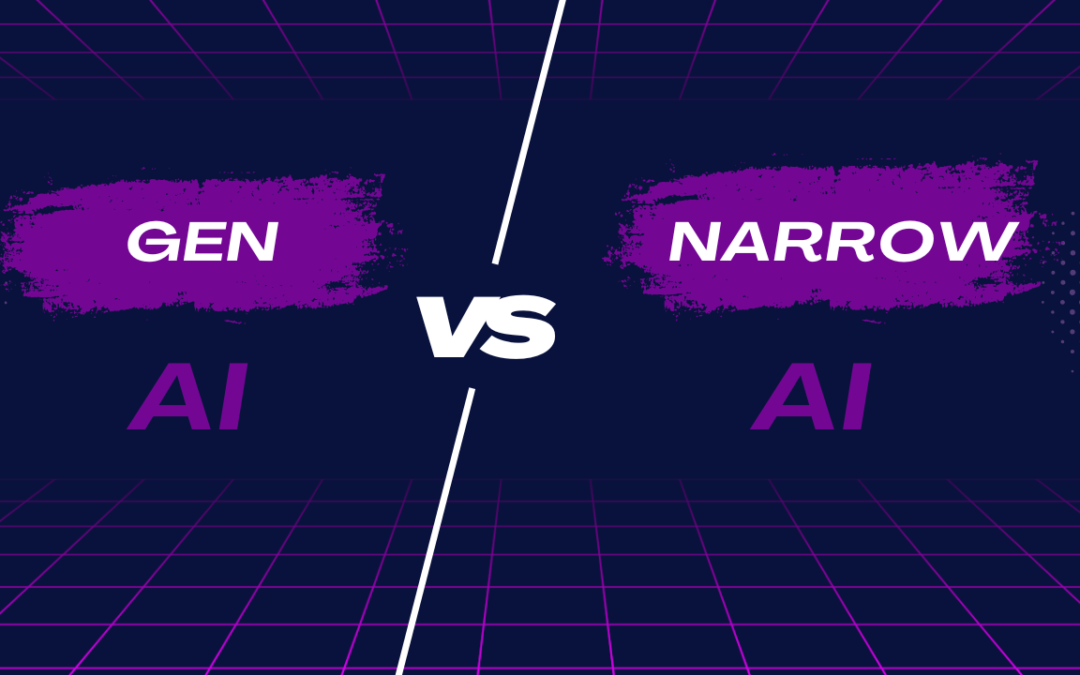
by Hannah Rivera | Oct 16, 2024 | Artificial Intelligence, Blog, Latest Post |
Artificial Intelligence (AI) is transforming the way we live, work, and interact with technology. From personalized shopping recommendations to art generated by machines, AI has penetrated almost every aspect of our lives. However, it’s important to recognize that not all AI is the same. There are various types of AI systems, each with distinct capabilities, limitations, and use cases.
Two major types of AI often discussed in today’s technology landscape are Generative AI and Narrow AI. While both are incredibly powerful, they are designed for different purposes and operate in different ways.
In this comprehensive guide, we will explore the key differences between Generative AI and Narrow AI, how they work, and where they are used. By the end of this post, you’ll have a solid understanding of these two AI types and how they are shaping our world today.
What is Narrow AI?
Narrow AI, also referred to as Artificial Narrow Intelligence (ANI), is AI that is designed to perform a specific task or a limited range of tasks. Narrow AI is highly specialized in solving particular problems, and it does so with incredible efficiency. However, it is constrained by the limitations of its programming and cannot go beyond its predefined roles.
Narrow AI systems are typically built to excel in one domain, and while they can achieve superhuman performance in that area, they lack general understanding or awareness. For example, an AI system designed to recommend products on an e-commerce website can do that task very well but cannot perform unrelated tasks like diagnosing medical conditions or holding a conversation.
Key Characteristics of Narrow AI:
- Task-Specific: Narrow AI is highly specialized and excels at one specific task.
- Predefined Algorithms: It operates based on predefined rules and patterns learned from data.
- No Creativity: It can’t generate original ideas or content outside of its training.
- Limited Flexibility: Narrow AI cannot adapt to new tasks without being explicitly programmed.
Real-World Examples of Narrow AI:
- Spam Filters: Email systems use AI to identify and filter spam messages from legitimate emails. The AI is trained to recognize patterns typical of spam, but it cannot write emails or understand the nuances of human communication.
- Facial Recognition: Narrow AI is used in facial recognition systems, such as those used for unlocking smartphones. These systems are trained to detect facial features and match them to a stored profile, but they cannot perform other tasks like object recognition.
- Netflix’s Recommendation System: When Netflix suggests a show or movie, it uses a Narrow AI algorithm. The AI analyzes your viewing habits and cross-references them with data from other users to predict what you might like. However, the AI can’t produce or create content—it only recommends existing shows based on patterns.
- Self-Driving Cars: Companies like Tesla and Waymo use Narrow AI for autonomous driving systems. These systems are excellent at recognizing road signs, avoiding obstacles, and navigating through traffic. However, they cannot generalize beyond driving tasks. If a self-driving car encountered an unfamiliar scenario, like an alien landing, it wouldn’t know how to react.
What is Generative AI?
Generative AI is a type of artificial intelligence that is designed to generate new content. Unlike Narrow AI, which is constrained to specific tasks, Generative AI is capable of creating something original. This could be a new image, piece of text, audio, or even a video based on the patterns it has learned from the training data.
Generative AI models work by learning from vast datasets to understand patterns and structures, allowing them to produce entirely new outputs. For instance, a generative language model can write essays, code, or even poetry based on the prompts given by users. Similarly, an image generation model can create artwork or designs from scratch based on descriptive inputs.
Key Characteristics of Generative AI:
- Creativity: Generative AI can produce original and new content based on learned patterns.
- Wide Range of Applications: From text generation to art creation, Generative AI can work across different domains.
- Data-driven: It requires large datasets to learn and generate realistic content.
- Flexible: Generative AI can adapt to different creative challenges, depending on its training and prompt input.
Real-World Examples of Generative AI:
- ChatGPT: One of the most well-known examples of Generative AI is ChatGPT, an AI model developed by OpenAI. It can generate text responses, write articles, solve programming problems, and even engage in detailed conversations. Given a prompt, ChatGPT creates coherent and contextually relevant content based on the information it has learned during training.
- DALL·E: DALL·E is an AI model that generates images from textual descriptions. For example, if you ask it to create “a futuristic city skyline at sunset,” it will produce an entirely new image based on your description. This creative process is a defining feature of Generative AI.
- Music Generation: AI models like OpenAI’s MuseNet or Google’s Magenta can generate original music compositions in various styles. By learning from existing pieces, these models can create unique and complex musical scores.
- DeepFakes: While controversial, Generative AI can also be used to create hyper-realistic videos or images, often referred to as “deepfakes.” These models generate lifelike visuals of people doing or saying things they never did, which raises significant ethical concerns.
The Core Differences Between Narrow AI and Generative AI
| Characteristic |
Narrow AI |
Generative AI |
| Purpose |
Task-specific problem-solving |
Creating new, original content |
| Creativity |
No creative abilities |
Capable of creative output |
| Data Use |
Uses data to recognize patterns and make predictions |
Uses data to generate new content |
| Example |
Google’s Search Engine |
ChatGPT creating a poem or writing code |
| Scope |
Limited to specific tasks |
Can work across different domains, if trained |
| Existence Today |
Common (e.g., recommendation systems, voice assistants) |
Emerging rapidly (e.g., content generation, media) |
Use Cases and Applications
Both Narrow AI and Generative AI have their unique strengths, and their applications are expanding across industries.
Narrow AI Use Cases:
- Customer Service: Many companies use Narrow AI in the form of chatbots to assist customers with basic queries. These chatbots use predefined responses and can handle simple interactions but lack the ability to hold creative or in-depth conversations.
- Healthcare Diagnostics: In healthcare, Narrow AI can assist doctors by analyzing medical data such as X-rays or MRI scans to detect diseases. It excels at recognizing specific patterns but cannot provide a holistic understanding of patient care.
- Fraud Detection: Banks and financial institutions use Narrow AI algorithms to detect fraud. These models analyze transaction patterns and flag any anomalies, preventing fraudulent activities. However, they cannot generate new strategies to combat evolving fraud schemes.
Generative AI Use Cases:
- Content Creation: Generative AI is revolutionizing content creation. Marketers, writers, and designers use tools like Jasper or DALL·E to generate blog posts, artwork, or social media content, saving time and increasing creative output.
- Gaming and Entertainment: In the gaming industry, Generative AI is being used to create immersive worlds, characters, and storylines. Players can experience unique environments that are generated on-the-fly, providing dynamic experiences every time they play.
- Drug Discovery: In pharmaceuticals, Generative AI is helping to design new drugs by generating molecular structures that could potentially lead to new treatments. By predicting how molecules will behave, AI accelerates the drug development process.
Challenges and Limitations
Narrow AI Challenges:
- Lack of Generalization: Narrow AI systems are limited in their scope and cannot generalize beyond their specific task. For example, a fraud detection model cannot suddenly be used to analyze medical images without retraining from scratch.
- Data Dependency: Narrow AI relies heavily on the quality and quantity of data it is trained on. Poor or biased data can result in inaccurate or unfair outcomes.
Generative AI Challenges:
- Ethical Concerns: The creative capabilities of Generative AI raise ethical questions. Deepfakes and AI-generated content can be misused to spread misinformation, creating challenges in detecting what is real versus fake.
- Bias in Content: Since Generative AI learns from data, it can inadvertently perpetuate biases present in that data. For example, if a language model is trained on biased text, it may produce biased content in its outputs.
The Future of Generative and Narrow AI
As both Narrow AI and Generative AI continue to evolve, we can expect each to play increasingly significant roles in technology and society.
Narrow AI Future:
Narrow AI will likely continue to dominate task-specific domains, particularly in areas requiring high accuracy and efficiency, such as healthcare diagnostics, financial services, and autonomous driving. The challenge for Narrow AI will be to increase adaptability without sacrificing its task-specific performance.
Generative AI Future:
Generative AI is still in its early stages but holds immense potential in creative industries, education, and scientific research. As models become more sophisticated, we can expect AI to collaborate with humans on more complex projects, from writing novels to designing buildings or inventing new technologies.
However, along with these advancements come challenges related to regulation, ethics, and ensuring that AI serves humanity’s best interests.
Conclusion
In summary, Narrow AI is focused on performing specific tasks with high precision and efficiency, while Generative AI is capable of creating new and original content based on learned patterns. Each type of AI has its own set of strengths, applications, and challenges.
As AI continues to advance, we can expect both Narrow AI and Generative AI to complement each other, driving innovation across industries. Whether it’s recommending your next movie or generating a masterpiece, the future of AI holds endless possibilities.
Codoid offers the best AI services to help businesses harness the full potential of both Narrow and Generative AI, ensuring cutting-edge solutions for your unique needs.

by Hannah Rivera | Oct 14, 2024 | Artificial Intelligence, Blog, Latest Post |
This blog talks about how large language models (LLMs) can connect with SQL databases. The goal is to build chat apps that are easy and fun to use. Picture chatting with your data like you would with a coworker when answering a user’s question. This guide will help you understand everything. By the end, you will know how to change the way you connect with SQL databases. You will also learn to use natural language for a clear and simple experience.

Key Highlights
- Explore how Large Language Models (LLMs) and Structured Query Language (SQL) work together. This helps you talk to databases using natural language. It makes working with data feel easier.
- Learn how to set up your environment for LLM-SQL. This means choosing the right tools and libraries. You will also set up your database for safe access.
- We will show you how to create a simple chat interface. This will turn user requests into SQL queries and get the results.
- Discover how to use LLMs like GPT to improve chat applications. They can help understand what users want and make SQL queries more flexible.
- Learn about the common problems when working with LLMs and SQL. You will also find ways to solve these issues and make performance better.
Understanding the Basics of LLM and SQL for Database Chatting
The strength of this integration comes from the teamwork of LLMs and SQL databases. LLMs, such as GPT, are skilled at understanding and writing text that seems human. This skill helps them read user requests in simple words. They can understand what a person needs, even if the question is not asked with technical database terms.
SQL databases are key for storing and managing data. They have a clear structure, which helps to keep, organize, and find information with simple queries. When we mix these two ideas, we connect how people talk with how databases work.
Introduction to Large Language Models (LLM)
Large Language Models (LLMs) are useful for Natural Language Processing (NLP). They can read text and write sentences that feel real. This makes them perfect for chat apps because they can answer questions well. When you combine LLMs with generative AI and SQL queries, you can link to a database and find information fast. Bringing together language models and databases helps build smart chatbots. This improves the user experience. Using SQL with LLMs is a smart way to handle user queries efficiently.
The Role of SQL in Database Management
SQL means Structured Query Language. It is the main language used for working with relational databases. A SQL database stores data clearly. It uses tables that have rows and columns. Rows are the records, and columns are the fields. SQL gives a strong and standard way to access and manage data.
Users can make SQL queries to get, change, add, or remove data in the database. These queries are like instructions. They inform the database about what to do and which data to handle. To create these queries, you must follow specific rules. You also need to understand the structure of the database. This means knowing the table names, column names, and data types.
Setting Up Your Environment for LLM-SQL Interactions
Before you begin building, you need to set up a good environment. This means creating a workspace where your LLM and SQL database can work together smoothly. When you do this, everything, like your code and database links, will be ready to connect.
First, pick the right tools. Langchain is a great framework for making apps that use LLM. It helps you connect to various data sources, like SQL databases. You must install the right libraries and set up the links to your database.
Tools and Libraries Needed for LLM-SQL Integration
To begin using LLM with SQL, the first thing you need to do is set up the right tools and libraries. A good idea is to create a virtual environment as your default setup. This practice will help avoid problems with dependencies and keep your project organized. In this separate environment, all the packages you need for your project will stay safe.
You will use strong tools like Langchain. This tool helps you build apps that work with Large Language Models, or LLMs. Langchain links your chosen LLM to an external SQL database.
To create your chat application, you can pick from many good open-source LLMs. You can also use advanced models like GPT from OpenAI. The OpenAI libraries give you the tools you need to add these models to your Python setup easily.
Configuring Your Database for LLM Access
Once you have your tools ready, it is time to set up your SQL database. This helps ensure that the LLM can access it safely and in a controlled way. In this guide, we will use PostgreSQL. It is a strong and popular open-source relational database. People know it is reliable and packed with many features. You can also use similar ideas with other SQL databases.
It’s really important to protect sensitive information. This includes items like database details. A good method to do this is by using environment variables. They keep this information away from your code. This makes your setup more secure.
To handle your environment variables, you need to make a .env file. This file usually stays in the main folder of your project. It gives you a simple place to set and manage important configuration details.
from langchain_community.utilities import SQLDatabase
from langchain.chains import create_sql_query_chain
from langchain_openai import ChatOpenAI
from dotenv import load_dotenv
load_dotenv()
db = SQLDatabase.from_uri("mysql+mysqlconnector://root:Codoid%40123@localhost:3306/demo")
print(db.dialect)
print(db.get_usable_table_names())
result = db.run("SELECT * FROM worker_table LIMIT 10;")
llm = ChatOpenAI(model="gpt-3.5-turbo", temperature=0)
chain = create_sql_query_chain(llm, db)
question = input("enter you question here: \n")
response = chain.invoke({"question": question})
print("SQL IS : ", response)
print("Result is: ", db.run(response))
Developing Your First Chat Interface with LLM and SQL
Now, you can start making your chat interface! You can create a basic command-line interface or a chat application on the web. The main goal is to allow users to enter their requests using natural language.
In the end, this interface will connect human language to how accurately queries come from databases.
Designing a Simple Chat UI
Making a complete chat application can be tough. However, in this demo, we will keep things simple. We will mainly focus on sending a request to the LLM and showing the answer. The user interface (UI) for this version will be easy to understand.
A simple command-line interface is a great place to start. Picture an easy setup where people can type their questions in plain English.
This setup allows users to practice asking questions to the database in natural language.
Connecting the Chat Interface to the Database
Connecting your chat interface to the SQL database helps it run easily. This link lets the app send questions from the LLM to the database. Then, it gets the answers back.
An API, which stands for application programming interface, allows the chat interface to work well with the SQL server. It takes requests from the chat and turns them into commands that the SQL database can read.
After the database runs the query, the API sorts the database results. Then, it sends them back to the chat interface. This way, the user can see the results.
Enhancing Your Chat Application with Advanced SQL Queries
As your chat app grows, make sure it can deal with harder questions. By learning how tables connect and using more advanced SQL parts, you help the LLM give better and more useful answers.
Vector databases provide a fresh way to handle similarity searches. Regular SQL databases may struggle with this task. For example, if a user asks a question that does not exactly match what is in the database, a vector database can still locate information that is similar in meaning. This gives better results and helps create a more enjoyable experience for users.
Crafting Complex SQL Queries for More Dynamic Conversations
Improving your chat app to have better conversations means enhancing its ability to handle complex SQL queries. These queries do more than just retrieve basic data. They let the LLM perform tasks like merging data, grouping entries, and running subqueries. This offers you new ways to analyze data and have engaging discussions.
LLMs can learn to understand hard SQL queries. This lets them create queries that fit what users want, even when the questions are hard. By being good at making detailed queries, your chat application can collect data from various tables, do calculations, and provide better results to users.
Utilizing LLM to Interpret and Generate SQL Queries
At its heart, our chat application works well because the LLM connects common human language with the specific needs of the database. This is where it becomes interesting: the LLM serves as a smart interpreter.
When you ask a question, the language model looks at your words closely. It figures out what you want to know and then builds a SQL query. This SQL query presents your question in a way that the database can read.
The LLM can read and understand natural language. It can answer different types of questions. This means it can handle both simple queries and complex requests. Users can interact easily. They do not need to learn SQL.
Troubleshooting Common Issues in LLM-SQL Chat Applications
Even with good planning, you may still face problems, especially in the start. This is normal. What’s important is being ready with solutions. This will help make the experience easy and fun for users.
- Watch out for common problems, like incorrect SQL syntax in your queries.
- Also, check for issues when connecting the LLM to the SQL database.
- You can often fix these problems by using good error-handling techniques in your application’s code.
Debugging Connection Problems Between LLM and SQL Databases
Connection issues happen often with any app that connects to a database. LLM-SQL chat apps also face these problems. You might notice slow responses, receive error messages, or struggle to connect to the database at all.
To fix connection problems, you should start by checking the connection string your app uses for the SQL server. Make sure the hostname or IP address, port number, database name, username, and password are all correct.
Wrong permissions can cause access problems. Make sure the user account linking to the database has the right privileges. This is necessary to run the SQL queries made by the LLM.
Optimizing Performance for Real-time Interactions
In real-time chats, users want quick answers. That is why it is important to improve performance. The goal is to keep your chat application fast and responsive. It should be able to handle many user requests to the Postgres database without lagging.
Using the right methods can help your app show results to the user much quicker.
| Optimization Technique |
Description |
| Database Indexing |
Creating indexes on frequently queried columns in your Postgres database can dramatically expedite data retrieval, making your queries faster. |
| Query Optimization |
Efficient queries are crucial. Carefully analyze your queries and make use of database tools to identify areas for improvement. |
| Caching |
Implementing a caching mechanism can significantly boost performance. |
Conclusion
In conclusion, learning how to combine LLM and SQL for your chat database projects can create fun and engaging apps. First, it is important to grasp the basics. Next, set up your workspace. Make your designs easy for users. Then, enhance features by using advanced SQL queries. Fixing common problems and improving performance will lead to smoother interactions. Use LLM and SQL’s power to make your chat apps even better. If you want to know more about this great topic, visit our FAQ section for tips and help.
Frequently Asked Questions
-
How do I secure my LLM-SQL chat application?
To keep your LLM-SQL chat application safe, you need a strong plan. First, store important things, like your OpenAI API key and database passwords, in a safe place. Do not show these details in your code. You also need to protect your tokens. It is important to have good steps for authentication and authorization. This helps control access and stop unauthorized use of your application.
-
Can the LLM-SQL setup handle multiple users concurrently?
Yes, if you set up your LLM-SQL the right way, it can help many users at the same time. You can do this by handling requests in an asynchronous manner. Also, using good database connection pooling works well. These methods help create a strong and scalable solution. This means you can serve a lot of ChatGPT users at once without making it slower.
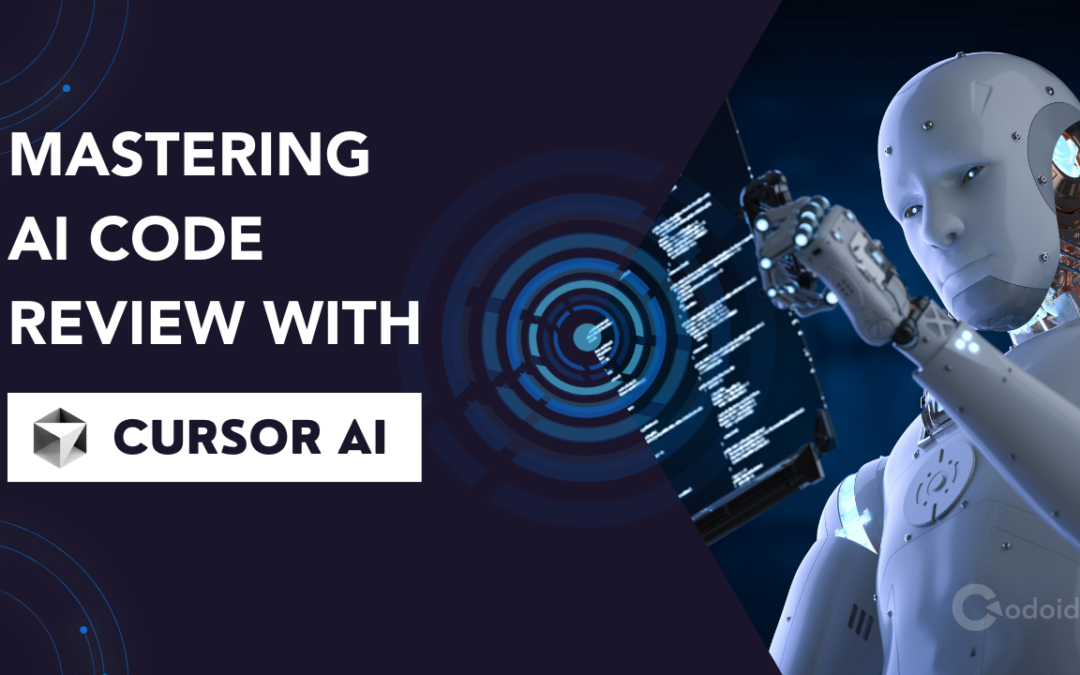
by Mollie Brown | Oct 4, 2024 | Artificial Intelligence, Uncategorized, Blog, Featured, Latest Post, Top Picks |
The coding world understands artificial intelligence. A big way AI helps is in code review. Cursor AI is the best way for developers to get help, no matter how skilled they are. It is not just another tool; it acts like a smart partner who can “chat” about your project well. This includes knowing the little details in each line of code. Because of this, code review becomes faster and better.
Key Highlights
- Cursor AI is a code editor that uses AI. It learns about your project, coding style, and best practices of your team.
- It has features like AI code completion, natural language editing, error detection, and understanding your codebase.
- Cursor AI works with many programming languages and fits well with VS Code, giving you an easy experience.
- It keeps your data safe with privacy mode, so your code remains on your machine.
- Whether you are an expert coder or just getting started, Cursor AI can make coding easier and boost your skills.
Understanding AI Code Review with Cursor AI
Cursor AI helps make code reviews simple. Code reviews used to require careful checks by others, but now AI does this quickly. It examines your code and finds errors or weak points. It also suggests improvements for better writing. Plus, it understands your project’s background well. That is why an AI review with Cursor AI is a vital part of the development process today.
With Cursor AI, you get more than feedback. You get smart suggestions that are designed for your specific codebase. It’s like having a skilled developer with you, helping you find ways to improve. You can write cleaner and more efficient code.
Preparing for Your First AI-Powered Code Review
Integrating Cursor AI into your coding process is simple. It fits well with your current setup. You can get help from AI without changing your usual routine. Before starting your first AI code review, make sure you know the basics of the programming language you are using.
Take a bit of time to understand the Cursor AI interface and its features. Although Cursor is easy to use, learning what it can do will help you get the most from it. This knowledge will make your first AI-powered code review a success.
Essential tools and resources to get started
Before you begin using Cursor AI for code review, be sure to set up a few things:
- Cursor AI: Get and install the newest version of Cursor AI. It runs on Windows, macOS, and Linux.
- Visual Studio Code: Because Cursor AI is linked to VS Code, learning how to use its features will help you a lot.
- (Optional) GitHub Copilot: You don’t have to use GitHub Copilot, but it can make your coding experience better when paired with Cursor AI’s review tools.
Remember, one good thing about Cursor AI is that it doesn’t require a complicated setup or API keys. You just need to install it, and then you can start using it right away.
It’s helpful to keep documentation handy. The Cursor AI website and support resources are great when you want detailed information about specific features or functions.
Setting up Cursor AI for optimal performance
To get the best out of Cursor AI, spend some time setting it up. First, check out the different AI models you can use to help you understand coding syntax. Depending on your project’s complexity and whether you need speed or accuracy, you can pick from models like GPT-4, Claude, or Cursor AI’s custom models.
If privacy matters to you, please turn on Privacy Mode. This will keep your code on your machine. It won’t be shared during the AI review. This feature is essential for developers handling sensitive or private code.
Lastly, make sure to place your project’s rules and settings in the “Rules for AI” section. This allows Cursor AI to understand your project and match your coding style. By doing this, the code reviews will be more precise and useful.
Step-by-Step Guide to Conducting Your First Code Review with Cursor AI
Conducting an AI review with Cursor AI is simple and straightforward. It follows a clear step-by-step guide. This guide will help you begin your journey into the future of code review. It explains everything from setting up your development space to using AI suggestions.
This guide will help you pick the right code for review. It will teach you how to run an AI analysis and read the results from Cursor AI. You will also learn how to give custom instructions to adjust the review. Get ready to find a better and smarter way to improve your code quality. This guide will help you make your development process more efficient.
Step 1: Integrating Cursor AI into Your Development Environment
The first step is to ensure Cursor AI works well in your development setup. Download the version that matches your operating system, whether it’s Windows, macOS, or Linux. Then, simply follow the simple installation steps. The main advantage of Cursor AI is that it sets up quickly for you.
If you already use VS Code, you are in a great spot! Cursor AI works like VS Code, so it will feel similar in terms of functionality. Your VS Code extensions, settings, and shortcuts will work well in Cursor AI. When you use privacy mode, none of your code will be stored by us. You don’t have to worry about learning a new system.
This easy setup helps you begin coding right away with no extra steps. Cursor AI works well with your workflow. It enhances your work using AI, and it doesn’t bog you down.
Step 2: Selecting the Code for Review
With Cursor AI, you can pick out specific code snippets, files, or even whole project folders to review. You aren’t stuck to just looking at single files or recent changes. Cursor AI lets you explore any part of your codebase, giving you a complete view of your project.
Cursor AI has a user-friendly interface that makes it easy to choose what you want. You can explore files, search for code parts, or use git integration to check past commits. This flexibility lets you do focused code reviews that meet your needs.
Cursor AI can understand what your code means. It looks at the entire project, not just the part you pick. This wide view helps the AI give you helpful and correct advice because it considers all the details of your codebase.
Step 3: Running the AI Review and Interpreting Results
Once you choose the code, it is simple to start the AI review. Just click a button. Cursor AI will quickly examine your code. A few moments later, you will receive clear and easy feedback. You won’t need to wait for your co-workers anymore. With Cursor AI, you get fast insights to improve your code quality.
Cursor AI is not just about pointing out errors. It shows you why it gives its advice. Each piece of advice has a clear reason, helping you understand why things are suggested. This way, you can better learn best practices and avoid common mistakes.
The AI review process is a great chance to learn. Cursor AI shows you specific individual review items that need fixing. It also helps you understand your coding mistakes better. This is true whether you are an expert coder or just starting out. Feedback from Cursor AI aims to enhance your skills and deepen your understanding of coding.
Step 4: Implementing AI Suggestions and Finalizing Changes
Cursor AI is special because it works great with your tasks, especially in the terminal. It does more than just show you a list of changes. It offers useful tips that are easy to use. You won’t need to copy and paste code snippets anymore. Cursor AI makes everything simpler.
The best part about Cursor AI is that you are in control. It offers smart suggestions, but you decide what to accept, change, or ignore. This way of working means you are not just following orders. You are making good choices about your code.
After you check and use the AI tips, making your changes is simple. You just save your code as you normally do. This final step wraps up the AI code review process. It helps you end up with cleaner, improved, and error-free code.
Best Practices for Leveraging AI in Code Reviews
To make the best use of AI in code reviews, follow good practices that can improve its performance. When you use Cursor AI, remember it’s there to assist you, not to replace you.
Always check the AI suggestions carefully. Make sure they match what your project needs. Don’t accept every suggestion without understanding it. By being part of the AI review, you can improve your code quality and learn about best practices.
Tips for effective collaboration with AI tools
Successful teamwork with AI tools like Cursor AI is very important because it is a team effort. AI can provide useful insights, but your judgment matters a lot. You can change or update the suggestions based on your knowledge of the project.
Use Cursor AI to help you work faster, not control you. You can explore various code options, test new features, and learn from the feedback it provides. By continuing to learn, you use AI tools to improve both your code and your skills as a developer.
Clear communication is important when working with AI. It is good to say what you want to achieve and what you expect from Cursor AI. Use simple comments and keep your code organized. The clearer your instructions are, the better the AI can understand you and offer help.
Common pitfalls to avoid in AI-assisted code reviews
AI-assisted code reviews have several benefits. However, you need to be careful about a few issues. A major problem is depending too much on AI advice. This might lead to code that is correct in a technical sense, but it may not be creative or match your intended design.
AI tools focus on patterns and data. They might not fully grasp the specific needs of your project or any design decisions that are different from usual patterns. If you take every suggestion without thinking, you may end up with code that works but does not match your vision.
To avoid problems, treat AI suggestions as a starting point rather than the final answer. Review each suggestion closely. Consider how it will impact your codebase. Don’t hesitate to reject or modify a suggestion to fit your needs and objectives for your project.
Conclusion
In conclusion, getting good at code review with Cursor AI can help beginners work better and faster. Using AI in the code review process improves teamwork and helps you avoid common mistakes. By adding Cursor AI to your development toolset and learning from its suggestions, you can make your code review process easier. Using AI in code reviews makes your work more efficient and leads to higher code quality. Start your journey to mastering AI code review with Cursor AI today!
For more information, subscribe to our newsletter and stay updated with the latest tips, tools, and insights on AI-driven development!
Frequently Asked Questions
-
How does Cursor AI differ from traditional code review tools?
Cursor AI is not like regular tools that just check grammar and style. It uses AI to understand the codebase better. It can spot possible bugs and give smart suggestions based on the context.
-
Can beginners use Cursor AI effectively for code reviews?
Cursor AI is designed for everyone, regardless of their skill level. It has a simple design that is easy for anyone to use. Even beginners will have no trouble understanding it. The tool gives clear feedback in plain English. This makes it easier for you to follow the suggestions during a code review effectively.
-
What types of programming languages does Cursor AI support?
Cursor AI works nicely with several programming languages. This includes Python, Javascript, and CSS. It also helps with documentation formats like HTML.
-
How can I troubleshoot issues with Cursor AI during a code review?
For help with any problems, visit the Cursor AI website. They have detailed documentation. It includes guides and solutions for common issues that happen during code reviews.
-
Are there any costs associated with using Cursor AI for code reviews?
Cursor AI offers several pricing options. They have a free plan that allows access to basic features. This means everyone can use AI for code review. To see more details about their Pro and Business plans, you can visit their website.



